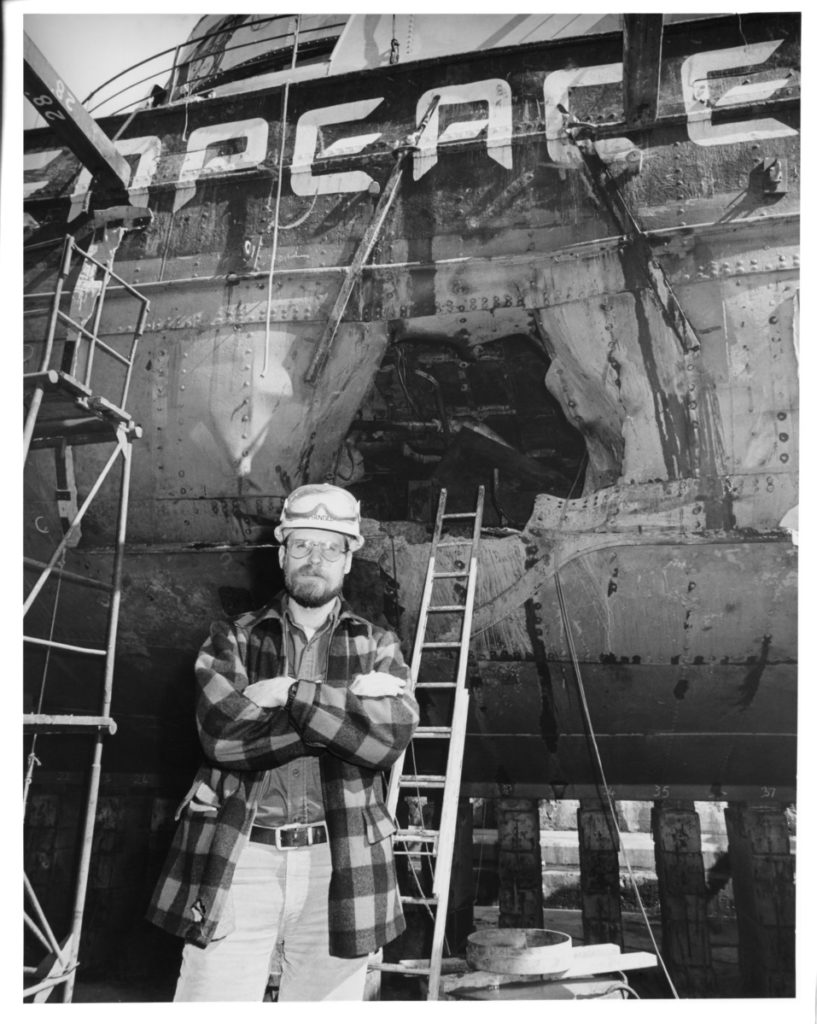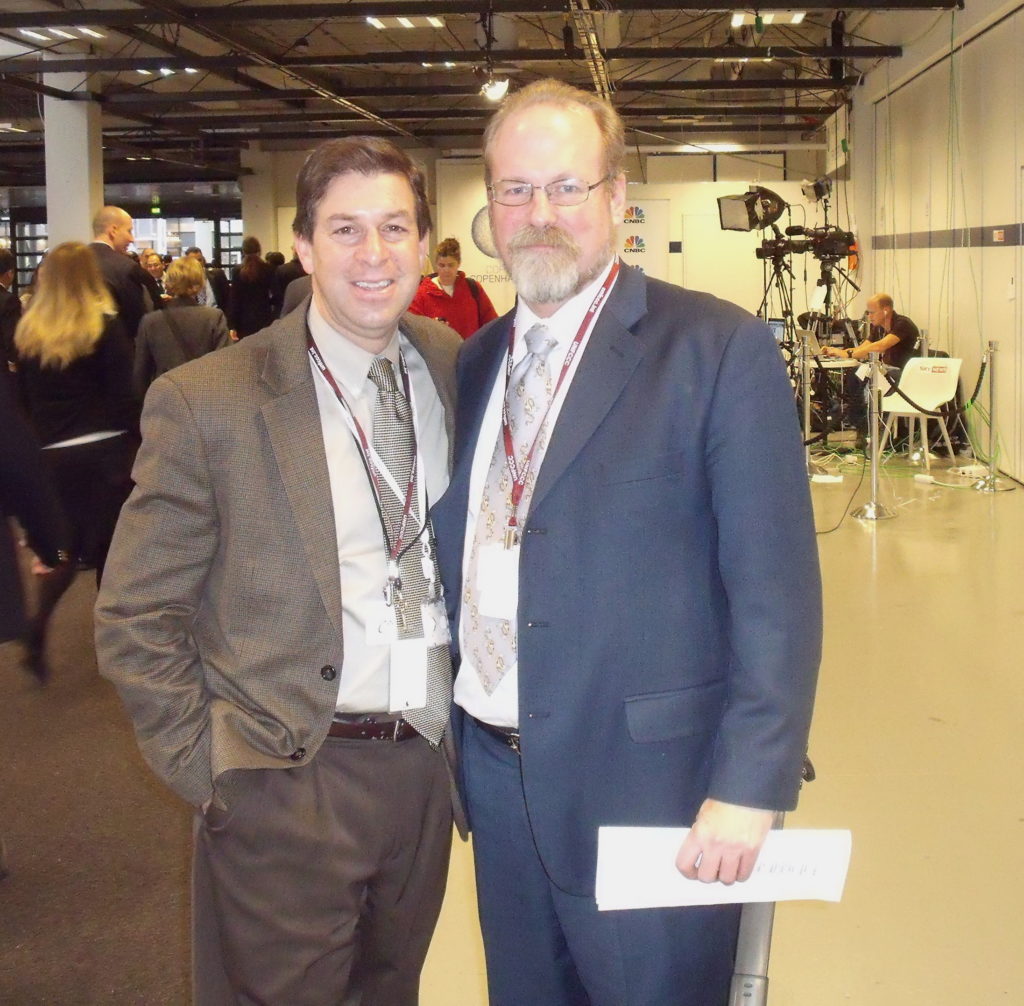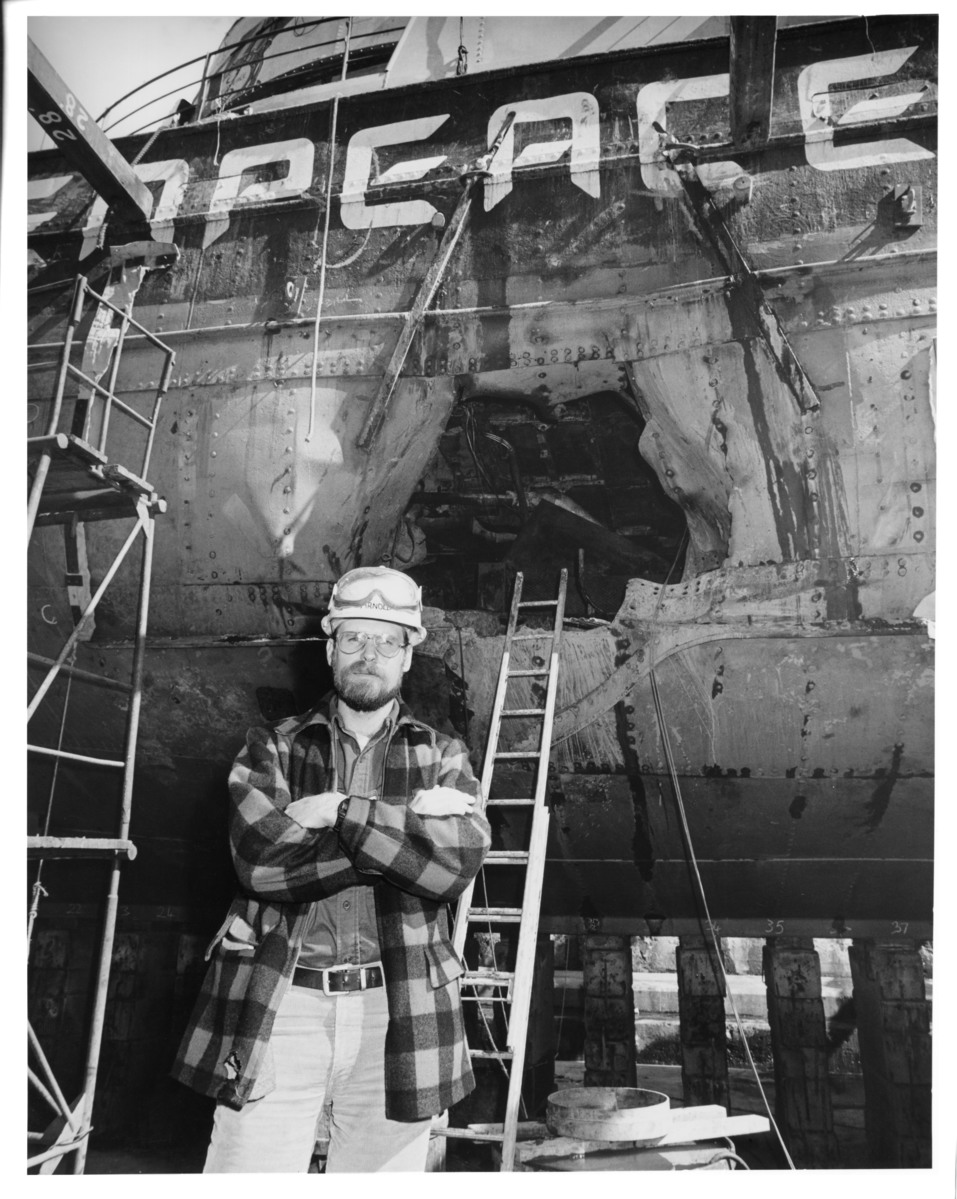Steve Sawyer, one of the great environmental activists and strategists of our era, died July 31 from cancer. It came as a shock. Steve was a classmate at Haverford College, a friend for 45 years, and a heroic figure to me in our shared allegiance to safeguard Mother Earth.
Though his years were too short, what he accomplished in 63 has few peers. He was an important figure in stirring attention to the Earth’s deteriorating condition and rallying public support for solutions, first as a senior leader of Greenpeace and later as a top executive in the international wind energy sector. During the four decades of his work to limit industrial pollution, protect natural resources, and defend communities in peril, Steve played an outsized role in elevating environmental protection from a backbench civic issue to a top tier global priority.
All this occurred because Steve had grit and heart. He set big goals and was driven to reach them. He could grump and laugh in the same breath. He was engaging, trust inspiring, committed and dedicated — to his wife, his children, his work, his friends, and to his wire frame glasses and the beard he sported all of his adult life. To his guitar, Led Zeppelin, and Eric Clapton. He never lost his New Hampshire accent. It was easy to see how determined he could be. Steve’s distinctive stride, big steps and shoulders hunched forward, was that of a man set on staying grounded and balanced, like a ship captain dominating a deluge.

His life’s work began as a Greenpeace canvasser in 1978, after graduation from Haverford. He quickly climbed into the top tier of executive leadership — serving as director of the U.S. office in Washington in the 1980s, and later as Greenpeace’s international director.
His tenure is unmatched at Greenpeace. In 1981, he led an engine conversion — drills and other power tools in hand — to replace the old engines on the Rainbow Warrior, Greenpeace’s activist ship, with new diesel engines used on buses. As one of the few salaried Greenpeace staffers he shared his paycheck with volunteers.
He also helped to convert the Warrior to a sailing ship in 1984, just in time for a Pacific voyage in 1985. Among the many campaigns that Steve led was evacuating nuclear testing refugees from their contaminated Pacific atoll, challenging France’s underwater nuclear testing, and safeguarding whales and other marine creatures from nuclear dumping and energy development. Most importantly, he masterfully elevated a scrappy activist environmental group into a titan of global influence and action on climate change and almost every other signal threat to the planet’s people, animals, and plants.
Starting in 2007, following 30 years at Greenpeace, Steve was named the first general secretary of the Global Wind Energy Council, the Brussels-based trade group that he founded. In that role he shaped the mammoth adoption of wind as a credible source of electricity, a solution to climate change, and an industrial sector capable of employing millions around the world. He brought that message to international capitals, including Beijing, where party officials paid close attention. In the decade that Steve led the organization, wind energy generating capacity around the world increased nearly eightfold, from 74 gigawatts to 539 gigawatts, or about 8 percent of total worldwide electrical generating capacity. Almost 200 gigawatts were generated by China, by far the world’s largest wind energy producer.
Steve and I shared a number of common devotions. His close Haverford friends also are mine. He was a global environmental activist and a non-profit executive of a trade group he founded. I am an environmental journalist reporting on ecological disruption around the world and founded a Michigan-based environmental nonprofit. Our paths crossed at climate conferences in Denmark and Barcelona. I spent a day with Steve on the Rainbow Warrior in 1982 when the ship was docked in Charleston, S.C. During the years we both spent in Washington, we partied together at Greenpeace events.
Kelly Rigg, Steve’s widow, and I worked for a time in international climate communications in the 2000s. I hurt for her and their two children, Layla and Sam.

Last year, on the occasion of our 40th class anniversary, the Haverford reunion planners invited Steve and me to prepare a keynote session that focused on our contributions to environmental security. I was humbled and thrilled. To be asked to participate alongside a friend whom I regarded as a giant in the movement was one of the great honors of my life.
Here’s the courage and moxie Steve embodied. On July 10, 1985, Steve’s 29th birthday, French government security agents set and detonated two explosive charges affixed to the hull of the Rainbow Warrior. The ship sank at its mooring in the Auckland, New Zealand harbor. Steve was the lead campaigner on the voyage that brought the Warrior across the Pacific to support international opposition to France’s dangerous underwater nuclear testing program in Mururoa, a Pacific atoll.
One of the Greenpeace campaigners, a photographer named Fernando Pereira, was killed by the state-sponsored terrorist attack. The blasts occurred near midnight.
Steve wasn’t intimidated. Greenpeace sent a boat to New Zealand that was larger than the Rainbow Warrior. He announced that Greenpeace would stay true to its mission and dispatch that boat, the M.V. Greenpeace, to the international waters near Mururoa to join a resistance flotilla to bear witness and protest French nuclear testing.
Thirty days later, even after it bombed the Rainbow Warrior, the French government issued a stern warning to Greenpeace to stay away. Steve told France to go to hell. The Greenpeace ship sailed, generating a wave of international opposition that persisted for 11 years. France ended its nuclear weapon testing program in 1996.
— Keith Schneider



Beautiful. I wish I would have had the opportunity to meet Steve. Each time I’d pass through Amsterdam (Israel to LA or on the way back) and contact Kelly in advance, the guy was just too busy. I really did want to meet.
What an amazing human. Every generation needs a Steve Sawyer.